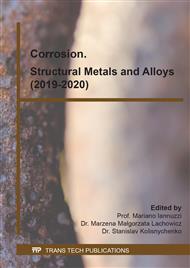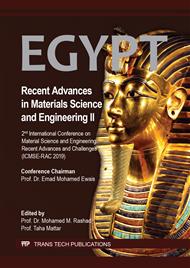p.93
p.101
p.108
p.115
p.123
p.130
p.135
p.141
p.149
Stress Corrosion Cracking of High-Pressure Scrubber in Urea Plant: A Case Study
Abstract:
This current work investigates the failure of high pressure (HP) scrubber lining in urea fertilizer production plant after 20 years in service. AISI 316L urea grade (UG) stainless steel scrubber lining was showed severe damage. In order to find out the root cause of failure, cracks were observed by visual inspection together with microstructure examination Chemical analysis of the base metal and corrosion products were analyzed Chemical analysis of the lining base alloy is conformed to the AISI 316L UG. Results revealed existence of chloride assisted stress corrosion cracking (SCC) initiated from pitting formed in the inner surface of the scrubber lining. Corrosion products analysis revealed existence of chloride (Cl-). Localized pitting corrosion is attributed to Cl attack. The expected sources of chloride are water during hydrostatic testing, water vapor during passivation, chloride containing atmosphere during transportation or storage the base alloy in coastal areas and water vapor in carbamate gasses (process fluid). Pits initiated at the lining inner surface act as stress concentration sites assisted SCC initiation. Chloride SCC is caused by simultaneous action of both tensile stresses and a corrosive environment containing chloride. To overcome the scrubber failure, chloride must be eliminated and residual stresses must be controlled. Upgrading the scrubber base alloy using high-alloy duplex stainless steel (Safurex) is highly recommended.
Info:
Periodical:
Pages:
123-129
Citation:
Online since:
March 2020
Price:
Сopyright:
© 2020 Trans Tech Publications Ltd. All Rights Reserved
Share:
Citation:



